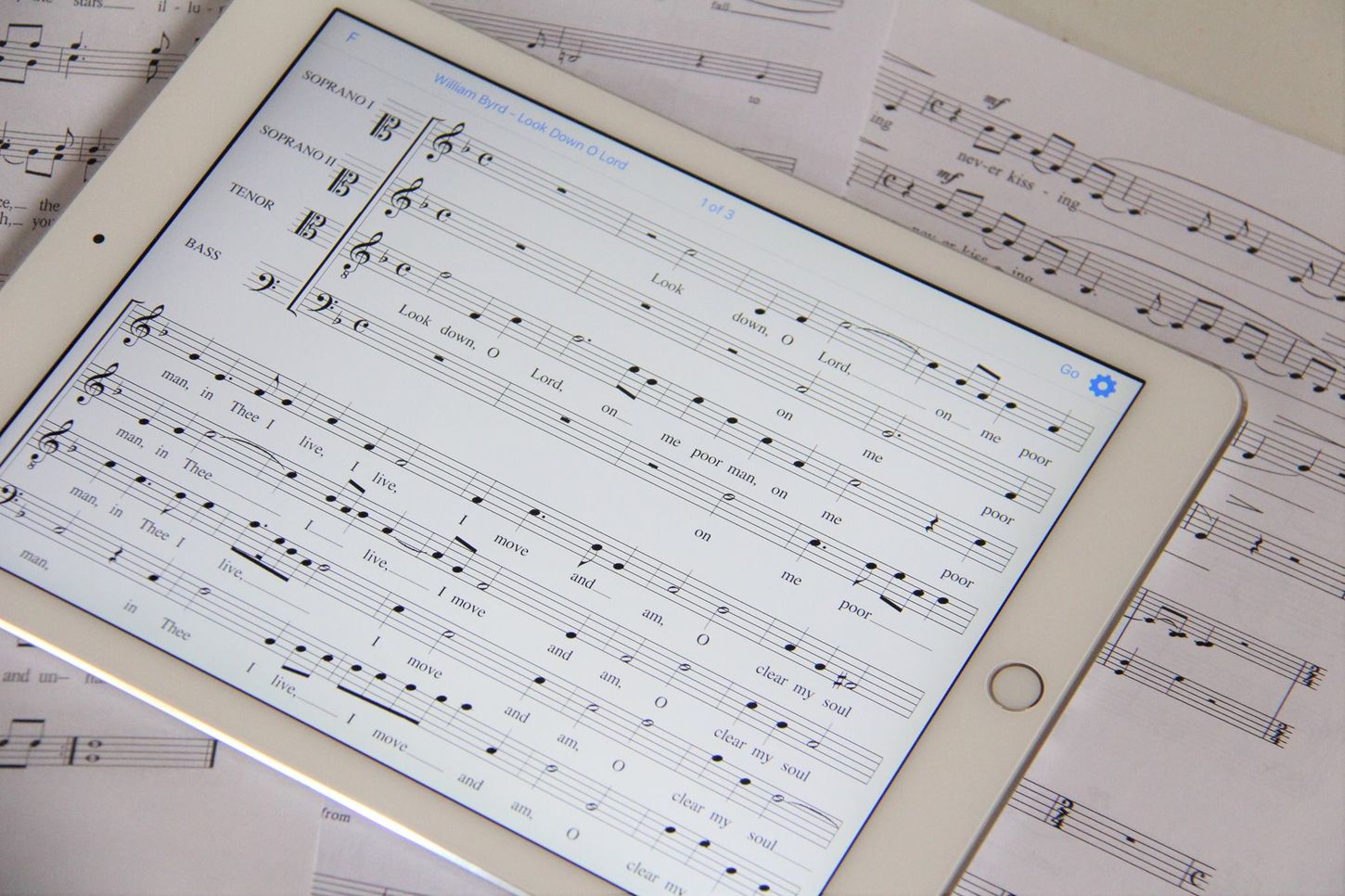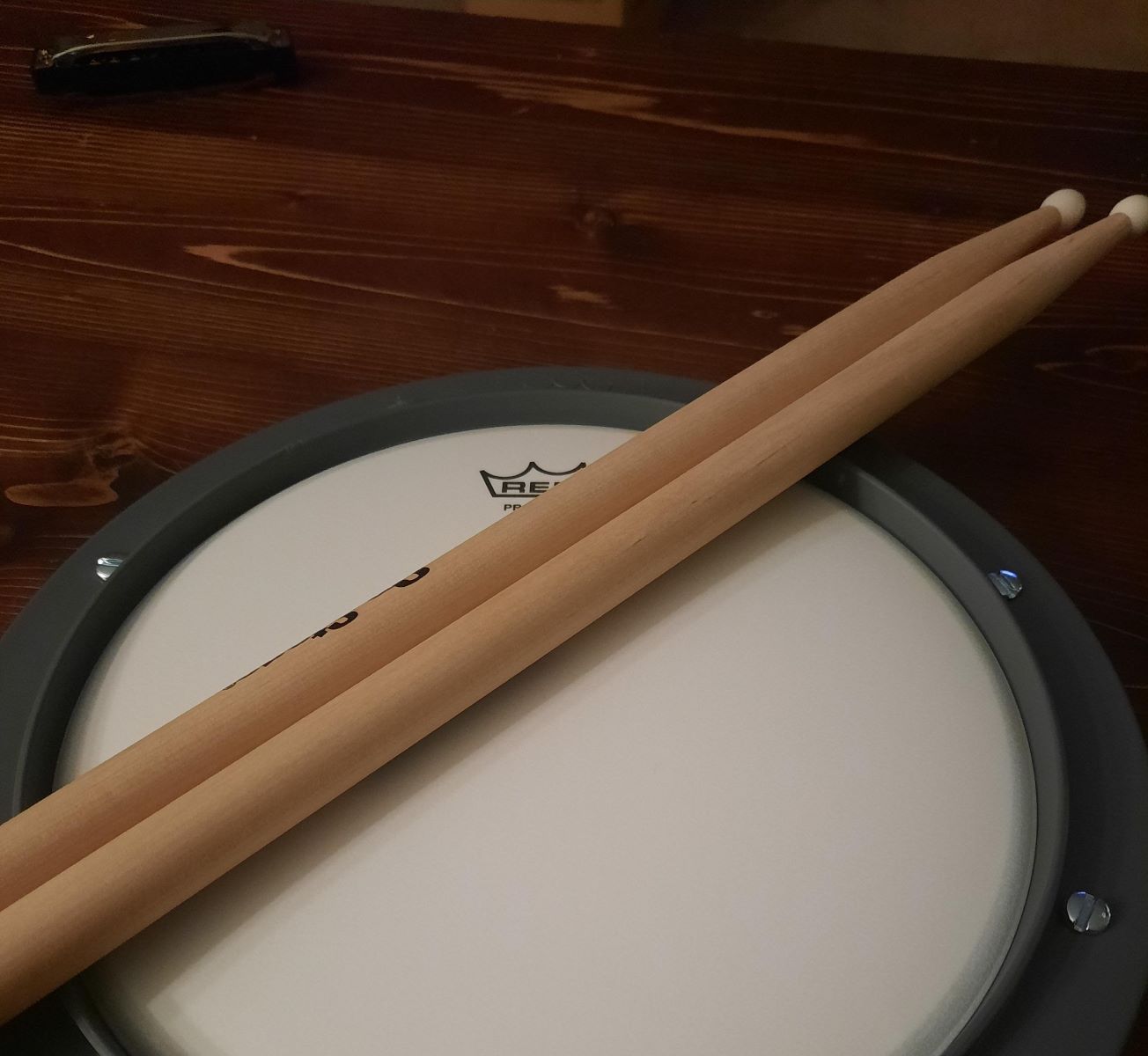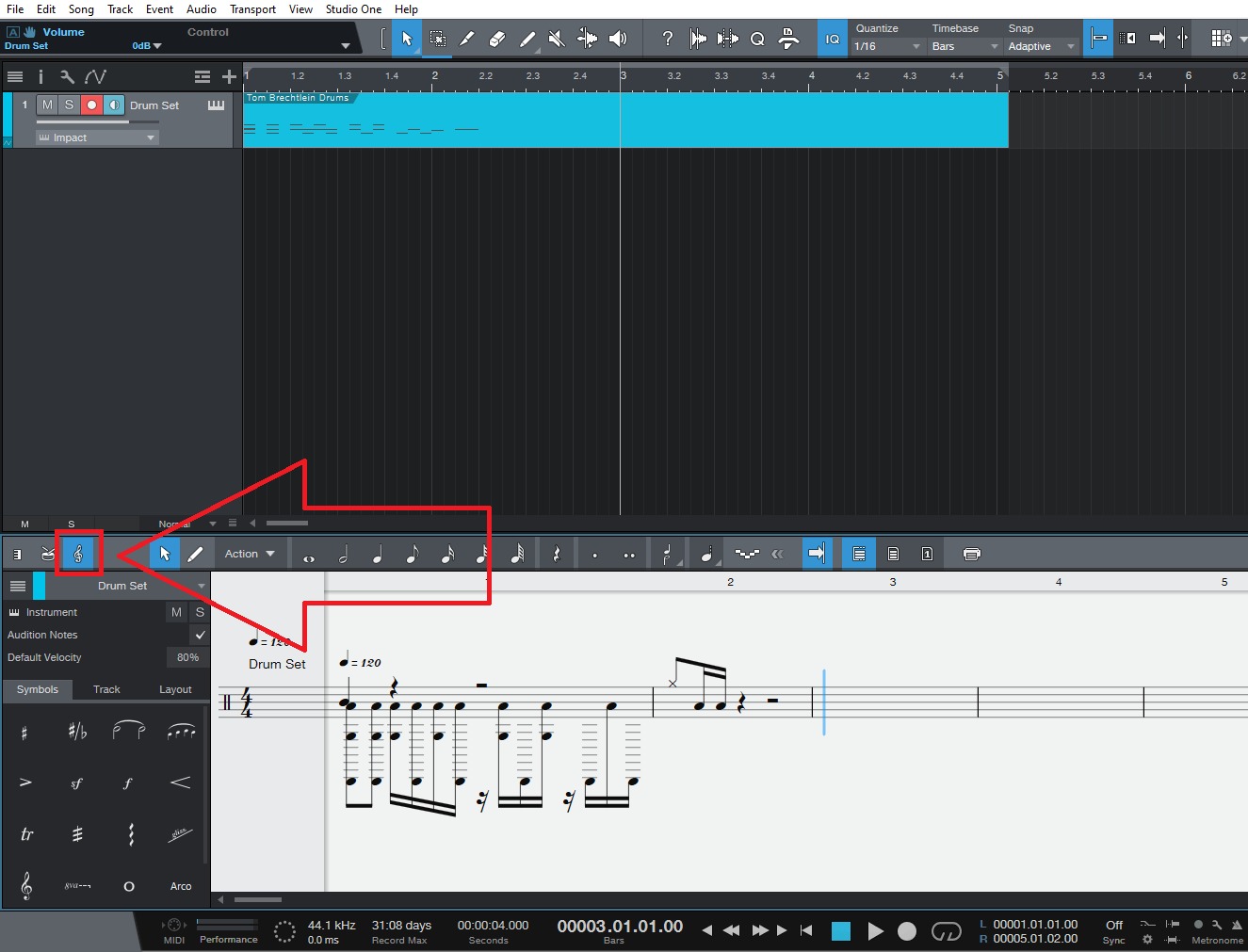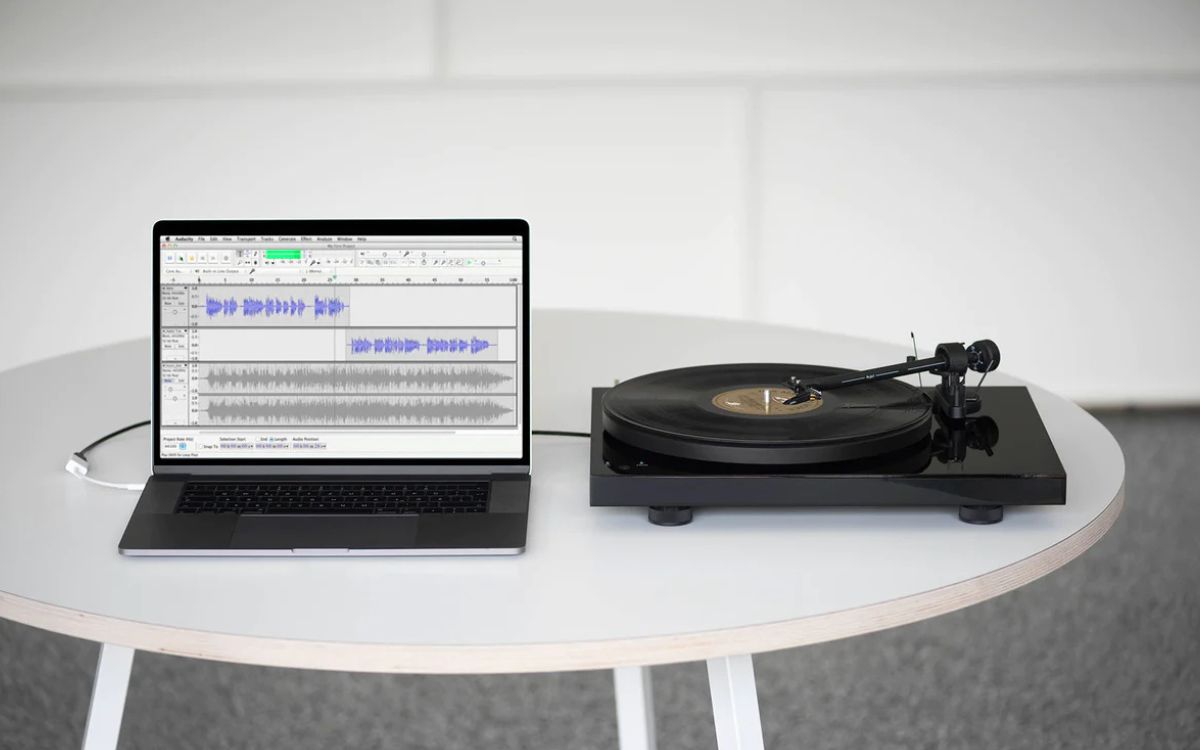Home>Production & Technology>MIDI>How To Transfer Regular Drums To MIDI
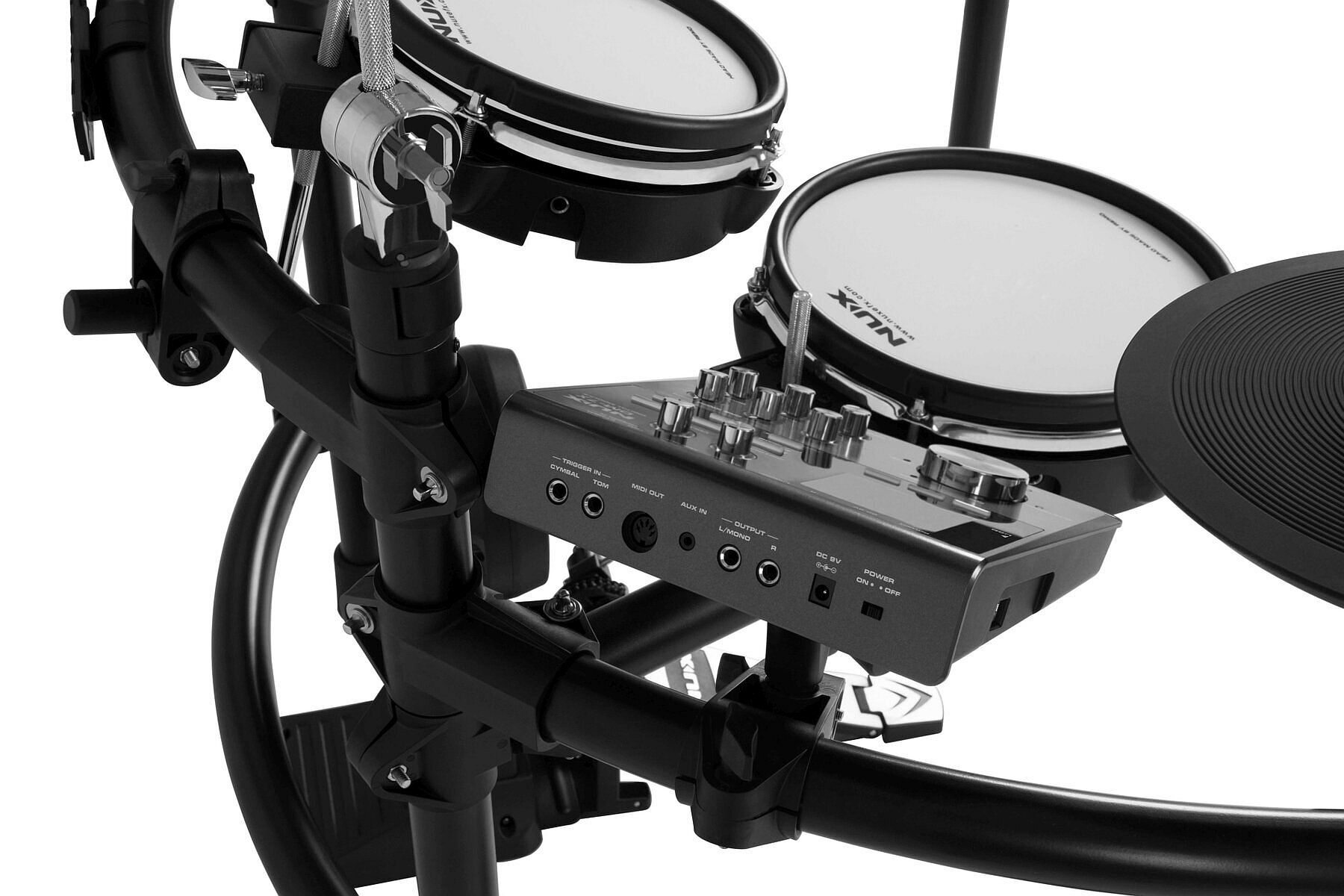

MIDI
How To Transfer Regular Drums To MIDI
Published: February 20, 2024
Learn how to easily transfer your regular drums to MIDI with our step-by-step guide. Convert your drum tracks to MIDI for endless creative possibilities.
(Many of the links in this article redirect to a specific reviewed product. Your purchase of these products through affiliate links helps to generate commission for AudioLover.com, at no extra cost. Learn more)
Table of Contents
Introduction
Welcome to the exciting world of MIDI, where the boundaries of music creation are continually being pushed and expanded. In this article, we will delve into the fascinating process of transferring regular drums to MIDI, unlocking a realm of possibilities for musicians, producers, and enthusiasts alike.
MIDI, which stands for Musical Instrument Digital Interface, has revolutionized the way music is created, recorded, and performed. It allows for the seamless integration of various musical components, enabling unparalleled flexibility and creativity. Regular acoustic drums, on the other hand, offer an organic and dynamic sound that has been a staple in music for decades.
The process of transferring regular drums to MIDI opens up a myriad of opportunities. It allows for precise editing, manipulation, and enhancement of drum performances, paving the way for a polished and professional sound. Whether you're looking to add electronic elements to your acoustic drum tracks or seeking to refine the timing and dynamics of your performances, the fusion of regular drums and MIDI offers an abundance of creative avenues to explore.
Throughout this article, we will explore the intricacies of this process, from understanding the fundamentals of MIDI and regular drums to the tools and equipment needed, as well as the step-by-step procedure for transferring regular drums to MIDI. Additionally, we will uncover valuable tips and tricks to streamline the process and elevate the quality of your MIDI drum tracks.
So, join us on this captivating journey as we unravel the art of transferring regular drums to MIDI, empowering you to infuse your music with innovation and precision. Let's embark on this musical adventure and unlock the boundless potential that MIDI has to offer!
Understanding MIDI and Regular Drums
MIDI, or Musical Instrument Digital Interface, serves as a universal language for electronic musical instruments, computers, and audio devices. It enables seamless communication between various musical components, allowing for the transmission of performance data, such as note events, velocity, pitch, and more. MIDI has become an integral part of modern music production, offering unparalleled flexibility and control.
Regular drums, also known as acoustic drums, are the traditional percussion instruments that have been a cornerstone of music for centuries. These instruments produce sound through the physical vibration of membranes, typically made of animal skin or synthetic materials, when struck with drumsticks or other implements. Regular drums possess a rich, organic sound characterized by nuances in tone, dynamics, and timbre.
When it comes to understanding the relationship between MIDI and regular drums, it's essential to recognize the contrast between electronic and acoustic elements. MIDI allows for the digital representation and manipulation of musical data, while regular drums embody the raw, tangible essence of acoustic sound production. The fusion of these two realms opens up a world of creative possibilities, bridging the gap between the organic and the electronic.
In the context of transferring regular drums to MIDI, the process involves capturing the audio output of acoustic drum performances and converting them into MIDI data. This conversion facilitates precise editing, quantization, and manipulation of the drum performance, offering a level of control and refinement that is unparalleled in the acoustic realm. It also enables the integration of electronic drum sounds, effects, and processing, expanding the sonic palette and artistic potential.
By understanding the unique characteristics of MIDI and regular drums, musicians and producers can harness the strengths of both worlds to elevate their musical creations. Whether it's infusing acoustic drum performances with electronic elements or sculpting the dynamics and timing of a drum track with precision, the synergy between MIDI and regular drums empowers artists to push the boundaries of creativity and sonic expression.
As we delve deeper into the process of transferring regular drums to MIDI, we will uncover the tools, techniques, and insights that enable this seamless integration, unlocking a realm of innovation and sonic excellence. Let's embark on this enlightening journey and unravel the transformative power of MIDI in the realm of regular drums.
Tools and Equipment Needed
To embark on the captivating journey of transferring regular drums to MIDI, several essential tools and equipment are required to facilitate the seamless integration of acoustic drum performances into the digital realm. These instruments and devices serve as the foundation for capturing, processing, and converting the raw audio output of regular drums into versatile MIDI data, unlocking a world of creative possibilities for musicians and producers.
1. Drum Microphones
High-quality drum microphones are indispensable for capturing the nuances and dynamics of acoustic drum performances. A well-equipped microphone setup, including dynamic and condenser microphones tailored for kick drums, snares, toms, and cymbals, ensures the accurate capture of each drum element with clarity and precision. Additionally, the placement and configuration of drum microphones play a crucial role in capturing the unique tonal characteristics and spatial dynamics of the drum kit.
2. Audio Interface
An audio interface serves as the bridge between the analog and digital domains, enabling the conversion of analog audio signals from the drum microphones into digital data that can be processed and manipulated within a computer or recording system. A high-quality audio interface with multiple input channels accommodates the simultaneous recording of individual drum tracks, preserving the integrity of the original performances for subsequent MIDI conversion and editing.
3. MIDI Controller or Drum Trigger
A MIDI controller or drum trigger provides the means to capture the transient and dynamic characteristics of acoustic drum hits and translate them into MIDI data. This essential component facilitates the conversion of physical drum strikes into digital information, allowing for precise representation of velocity, timing, and articulation in the MIDI domain. Whether utilizing drum trigger pads or a dedicated MIDI controller, this tool serves as the gateway for capturing the expressive nuances of acoustic drum performances.
4. Digital Audio Workstation (DAW) Software
A comprehensive digital audio workstation (DAW) software forms the central hub for processing, editing, and converting the recorded audio from regular drums into MIDI data. With a wide array of editing tools, MIDI functionalities, and audio processing capabilities, a robust DAW software empowers users to manipulate and refine the captured drum performances with unparalleled flexibility. Additionally, the integration of MIDI editing features within the DAW streamlines the process of converting audio to MIDI, offering a cohesive environment for creative exploration.
5. Drum Replacement Plugins
Drum replacement plugins, such as virtual instruments and sample libraries, augment the MIDI conversion process by providing access to a diverse range of electronic drum sounds and samples. These plugins enable users to seamlessly integrate electronic drum elements into the MIDI framework, enhancing the sonic palette and creative potential of the transferred regular drums. By leveraging drum replacement plugins, artists can infuse their acoustic drum performances with electronic textures, effects, and sonic enhancements, elevating the overall impact of the MIDI-transferred drum tracks.
6. MIDI Editing Tools
Specialized MIDI editing tools within the DAW software empower users to refine and sculpt the converted MIDI data with precision and finesse. These tools facilitate the adjustment of timing, velocity, articulation, and other musical parameters, allowing for meticulous customization and enhancement of the transferred regular drum performances. With intuitive MIDI editing capabilities, users can fine-tune the dynamics and expression of the MIDI-transferred drum tracks, ensuring a seamless integration of electronic and acoustic elements with artistic control and precision.
By assembling these indispensable tools and equipment, musicians and producers can embark on the transformative process of transferring regular drums to MIDI with confidence and creativity. The seamless integration of acoustic drum performances into the digital realm unlocks a realm of innovation, sonic excellence, and artistic exploration, empowering artists to push the boundaries of musical expression and creativity. As we delve into the subsequent steps of transferring regular drums to MIDI, these essential tools and equipment will serve as the catalyst for unlocking the boundless potential of MIDI integration in the realm of regular drums.
Steps to Transfer Regular Drums to MIDI
The process of transferring regular drums to MIDI involves a series of meticulous steps aimed at capturing, converting, and refining the raw audio output of acoustic drum performances into versatile MIDI data. This transformative procedure empowers musicians and producers to seamlessly integrate the expressive qualities of acoustic drums with the precision and flexibility of MIDI, unlocking a world of creative possibilities and sonic refinement. Let's embark on this enlightening journey as we explore the comprehensive steps to transfer regular drums to MIDI.
-
Recording Acoustic Drum Performances: The first step in the process entails capturing the acoustic drum performances using a well-configured microphone setup and an audio interface. Each drum element, including the kick drum, snare, toms, and cymbals, is individually miked to preserve the unique tonal characteristics and spatial dynamics of the drum kit. The meticulous placement and configuration of drum microphones ensure the faithful capture of the nuances and expressive qualities inherent in regular drums.
-
Translating Audio to MIDI: Once the acoustic drum performances are recorded, the next step involves translating the audio data into MIDI information using a MIDI controller or drum trigger. This pivotal process captures the transient and dynamic attributes of each drum hit, converting them into MIDI note events, velocity values, and articulation data. The precision and sensitivity of the MIDI controller or drum trigger play a crucial role in accurately representing the nuances and expressiveness of the acoustic drum performances in the digital domain.
-
Importing and Editing MIDI Data: With the MIDI information captured, it is imported into a digital audio workstation (DAW) software, where the editing and refinement process takes place. The imported MIDI data allows for precise manipulation of timing, velocity, and articulation, enabling users to tailor the dynamics and expression of the transferred regular drum performances. This stage empowers artists to fine-tune the MIDI data with artistic control, ensuring a seamless integration of acoustic and electronic elements.
-
Integration of Electronic Drum Sounds: To augment the MIDI-transferred regular drum performances, the integration of electronic drum sounds and samples through drum replacement plugins further expands the sonic palette and creative potential. These plugins provide access to a diverse array of electronic textures and effects, enhancing the overall impact and sonic richness of the MIDI-transferred drum tracks. By seamlessly blending acoustic and electronic elements, artists can elevate the depth and complexity of their musical compositions.
-
Refinement and Artistic Exploration: The final step involves meticulous refinement and artistic exploration, leveraging specialized MIDI editing tools within the DAW software to sculpt the transferred regular drum performances with finesse and precision. This stage allows for detailed adjustments to the MIDI data, ensuring a cohesive and expressive fusion of acoustic and electronic elements. Through creative exploration and meticulous refinement, artists can unlock the boundless potential of MIDI integration in the realm of regular drums, shaping their musical vision with unparalleled control and innovation.
By meticulously following these comprehensive steps, musicians and producers can embark on the transformative journey of transferring regular drums to MIDI, unlocking a realm of innovation, sonic excellence, and artistic exploration. This seamless integration of acoustic drum performances into the digital domain empowers artists to push the boundaries of musical expression and creativity, shaping their compositions with precision and finesse. As we embrace the transformative power of MIDI in the realm of regular drums, these meticulous steps serve as the guiding framework for unlocking the boundless potential of MIDI integration in music production and performance.
Tips and Tricks
Embarking on the journey of transferring regular drums to MIDI opens up a world of creative possibilities and sonic refinement. Alongside the comprehensive steps involved in this transformative process, there are invaluable tips and tricks that can streamline the workflow, enhance the quality of MIDI-transferred drum tracks, and elevate the overall musical experience. These insights and techniques serve as invaluable resources for musicians and producers seeking to harness the full potential of MIDI integration in the realm of regular drums.
1. Meticulous Drum Tuning and Preparation
Before capturing acoustic drum performances for MIDI conversion, meticulous tuning and preparation of the drum kit are paramount. Ensuring that the drums are finely tuned and properly prepared optimizes the quality and consistency of the recorded audio, laying a solid foundation for the MIDI conversion process. Additionally, addressing any resonant frequencies, tuning inconsistencies, or mechanical issues in the drum kit contributes to the faithful capture of the expressive qualities inherent in regular drums, facilitating a seamless transition to the MIDI domain.
2. Precision in MIDI Triggering and Sensitivity Adjustment
When utilizing a MIDI controller or drum trigger to capture acoustic drum hits for MIDI conversion, precision and sensitivity are key factors. Fine-tuning the triggering parameters and sensitivity settings of the MIDI controller or drum trigger ensures the accurate representation of velocity, dynamics, and articulation in the MIDI data. By optimizing the triggering mechanism, artists can capture the nuanced expressiveness of acoustic drum performances with fidelity, laying the groundwork for refined MIDI-transferred drum tracks.
3. Layering and Blending Drum Sounds
Incorporating the technique of layering and blending drum sounds can elevate the sonic richness and depth of MIDI-transferred regular drum performances. By combining the original acoustic drum hits with complementary electronic drum samples and textures, artists can create a hybrid sonic palette that transcends the limitations of traditional drum sounds. This approach enriches the overall tonal complexity and impact of the MIDI-transferred drum tracks, opening up new creative avenues for sonic exploration and artistic expression.
4. Experimentation with MIDI Effects and Processing
Exploring the realm of MIDI effects and processing offers a wealth of creative possibilities for enhancing the MIDI-transferred drum performances. Leveraging MIDI effects such as quantization, humanization, and velocity shaping enables users to refine the timing, groove, and expressiveness of the MIDI data, infusing the drum tracks with organic nuances and musicality. Additionally, experimenting with MIDI processing techniques, such as arpeggiation and modulation, adds a layer of depth and complexity to the MIDI-transferred regular drums, enriching the overall sonic landscape.
5. Collaboration and Iterative Refinement
Engaging in collaborative efforts and seeking feedback from peers and fellow musicians can provide valuable insights and perspectives on the MIDI-transferred drum tracks. Embracing an iterative approach to refinement and creative exploration allows for continuous improvement and enhancement of the transferred regular drum performances. By soliciting input and engaging in collaborative exchanges, artists can refine their musical vision and elevate the quality of MIDI-integrated drum tracks, fostering a dynamic and enriching creative process.
6. Embracing Artistic Expression and Authenticity
While the process of transferring regular drums to MIDI offers unparalleled control and precision, it is essential to embrace artistic expression and authenticity throughout the journey. Preserving the organic essence and emotive qualities of acoustic drum performances in the MIDI-transferred tracks contributes to a genuine and compelling musical narrative. By infusing the MIDI-transferred regular drum performances with artistic authenticity and emotional depth, artists can connect with their audience on a profound and resonant level, transcending the technical aspects of MIDI integration.
By integrating these invaluable tips and tricks into the process of transferring regular drums to MIDI, musicians and producers can navigate the transformative journey with confidence and creativity. These insights serve as guiding beacons, illuminating the path towards sonic excellence, artistic innovation, and expressive musical storytelling. As artists harness the full potential of MIDI integration in the realm of regular drums, these tips and tricks become invaluable allies, empowering them to shape their musical vision with precision, authenticity, and boundless creativity.
Conclusion
In conclusion, the process of transferring regular drums to MIDI represents a captivating fusion of traditional acoustic elements with the boundless potential of digital music technology. This transformative journey empowers musicians and producers to seamlessly integrate the expressive qualities of acoustic drums with the precision and flexibility of MIDI, unlocking a world of creative possibilities and sonic refinement.
As we have navigated through the comprehensive steps, essential tools, and invaluable tips and tricks involved in this process, it becomes evident that the synergy between MIDI and regular drums transcends technical integration; it embodies a harmonious balance between artistic expression and technological innovation. The meticulous capture of acoustic drum performances, the conversion of audio to MIDI, and the seamless integration of electronic textures and effects pave the way for a musical narrative that transcends boundaries and resonates with authenticity.
The transformative power of MIDI in the realm of regular drums extends far beyond mere technical prowess; it embodies a profound artistic journey marked by meticulous refinement, creative exploration, and a relentless pursuit of sonic excellence. By embracing the nuances of acoustic drum performances and infusing them with the precision and control of MIDI, artists can shape their musical vision with unparalleled finesse, authenticity, and boundless creativity.
The seamless integration of acoustic drum performances into the digital domain empowers artists to push the boundaries of musical expression and creativity, shaping their compositions with precision and finesse. As we embrace the transformative power of MIDI in the realm of regular drums, these meticulous steps serve as the guiding framework for unlocking the boundless potential of MIDI integration in music production and performance.
In essence, the process of transferring regular drums to MIDI transcends the technical realm; it embodies a transformative journey marked by artistic innovation, sonic exploration, and a relentless pursuit of musical excellence. By harnessing the full potential of MIDI integration in the realm of regular drums, musicians and producers can embark on a musical odyssey that transcends limitations and resonates with the authentic essence of artistic expression.






